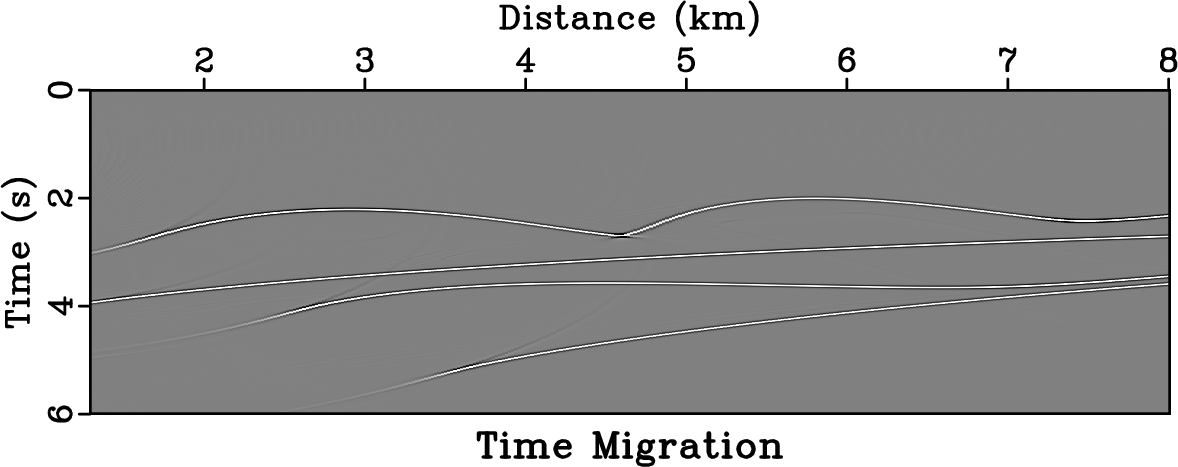|
|
|
|
Wave-equation time migration |


|
|---|
|
vel,zodata
Figure 1. Simple synthetic model (a) Velocity model. (b) Zero-offset data. |
|
|


|
|---|
|
vmigwin,kpstmtime
Figure 2. (a) Time migration velocity, and (b) Image obtained by Kirchhoff time migration. |
|
|


|
|---|
|
vdix,wetm1
Figure 3. (a) Dix velocity, and (b) Image obtained by wave-equation time migration using RTM in image-ray coordinates. All events are correctly focused in image-ray coordinates but appear in a distorted coordinate frame. |
|
|



|
|---|
|
acoord,anamapd,zomig
Figure 4. (a) Image rays (curves of constant |
|
|
|
|
|
|
Wave-equation time migration |